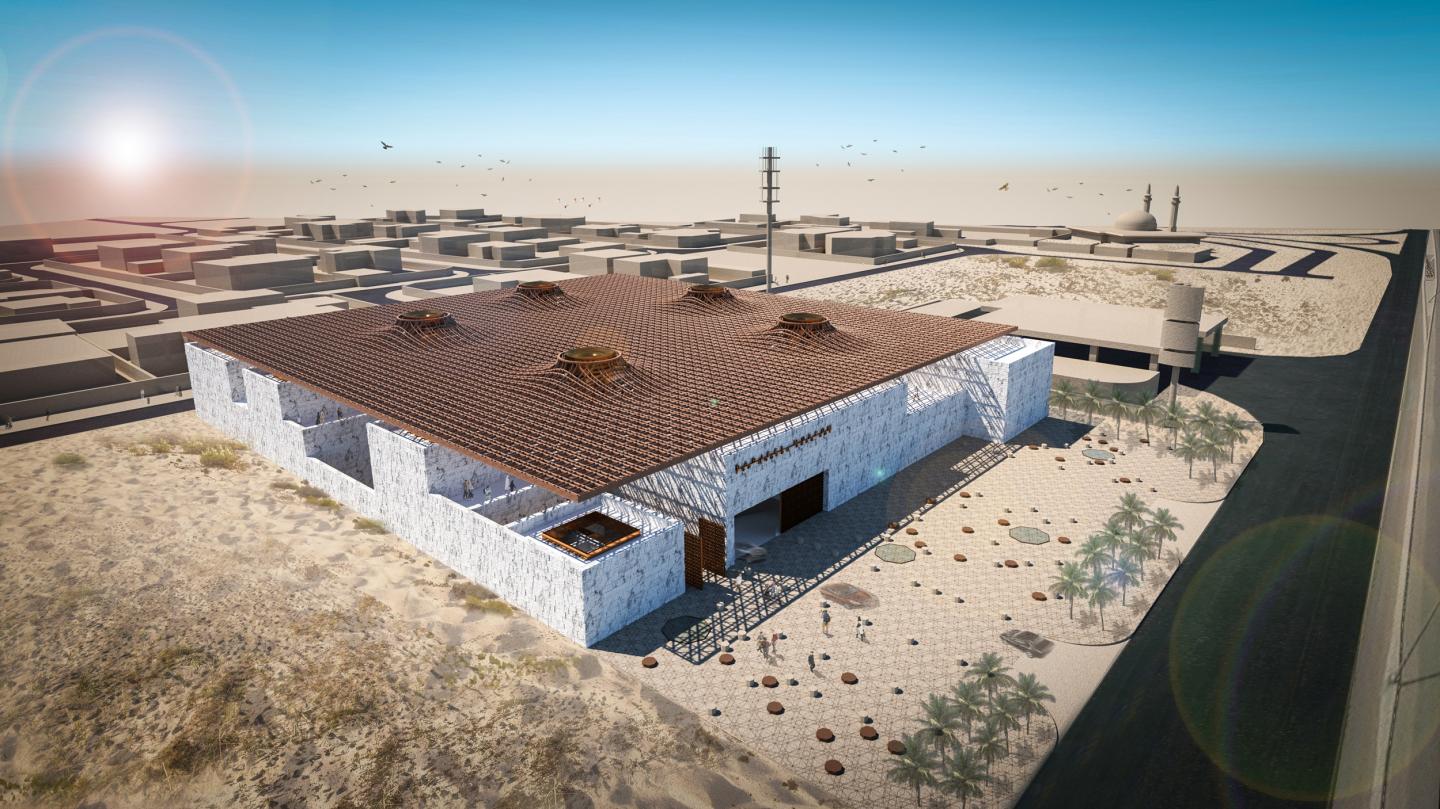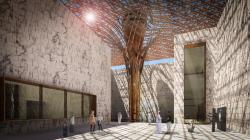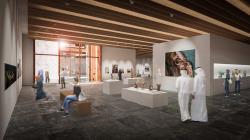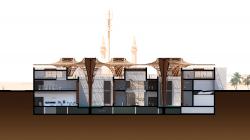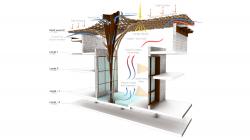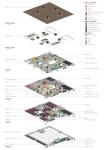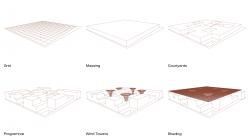1st Prize Winner of The Rifat Chadiriji Prize 2019 by Tamayouz Excellence Award.
Site.
The museum sits in a semi-industrial area on the periphery of Sharjah; its immediate context is a gas station, a highway and a low-density residential district.
Fortress.
We have filled the site with a low-rise monolithic structure covering the entire footprint of the plot. We envisage an introverted complex of solid appearance resembling a fortress. The museum is not designed as an architectural object, the site, and the surroundings would not justify such an approach, we have instead proposed a porous mass which we have meticulously carved to create courtyards, alleys, and passages, intertwined with the galleries and rest of the program. An immersive experience for the visitor to subtract himself from reality.
Galleries.
The galleries are organized as a circuit that unfolds around the internal courtyards of the museum, it's intended as a journey which is experienced gradually. They are laid out below street level to shield the artwork from sun exposure and thermal gains and to control the amount of natural light coming in. Filtered light is however introduced purposefully in the transition spaces between galleries letting the visitors catch a glimpse of the shaded exterior courtyards, water features and the base of the wind towers.
Barjeel.
In honor of the foundation's name, we decided to reinterpret the traditional wind tower typology reshaping it into a contemporary sculpture that not only serves as a cooling device but also adds value to the space. The wind towers work in tandem with the roof structure within the five courtyards of the museum, this way all outdoor spaces benefit from the effects of the wind enhanced by the water evaporation from the pools.
Roof.
The complex geometry of the roof shading canopy contrasts with the simple forms of the museum. Glimpses of the wooden structure can be viewed from the exterior, but their full beauty can only be experienced from within the building. Its geometry is inspired by the complex motifs of Arabic architecture and by the ancient Emirati weaving traditions. The soft curvature of the funnels are made out of steam-bent wood, another Emirati tradition well known in the shipbuilding industry. Its purpose apart from creating a striking gesture is to shade the courtyards, cool down the atmosphere and refract the sunlight. We have chosen wood as the material due to its low emissivity, its interweaving layers can be fully experienced from the rooftop promenade.
2019
0000
Size: 20,500 sqm
Height: 13.5 m
5 Galleries + Outdoor Sculpture Walk
2 Overground + 2 Underground Levels
5 Wind Towers
Cladding: Limestone
Roof Structure: Timber Gridshell
Rolando Rodriguez-Leal, Natalia Wrzask, Jose Luis Mulás
